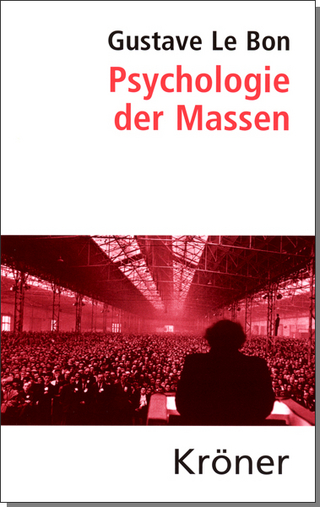
The Immigrant Rights Movement
Stanford University Press (Verlag)
978-1-5036-0888-7 (ISBN)
In the months leading up to the 2016 presidential election, liberal outcry over ethnonationalist views promoted a vision of America as a nation of immigrants. Given the pervasiveness of this rhetoric, it can be easy to overlook the fact that the immigrant rights movement began in the US relatively recently. This book tells the story of its grassroots origins, through its meteoric rise to the national stage.
Starting in the 1990s, the immigrant rights movement slowly cohered over the demand for comprehensive federal reform of immigration policy. Activists called for a new framework of citizenship, arguing that immigrants deserved legal status based on their strong affiliation with American values. During the Obama administration, leaders were granted unprecedented political access and millions of dollars in support. The national spotlight, however, came with unforeseen pressures—growing inequalities between factions and restrictions on challenging mainstream views. Such tradeoffs eventually shattered the united front. The Immigrant Rights Movement tells the story of a vibrant movement to change the meaning of national citizenship, that ultimately became enmeshed in the system that it sought to transform.
Walter J. Nicholls is Associate Professor of Urban Planning and Public Policy at the University of California, Irvine. He is the author of The DREAMers (2013) and Cities and Social Movements (2016).
Contents and AbstractsIntroduction chapter abstractThe introduction provides readers with a basic overview of the book's central concepts and arguments. It suggests that today's immigrant rights movement has its roots in local battles scattered throughout the country. It maps out how these local fights emerged and goes on to discuss their aggregation into a national social movement.
1The Rights of Immigrants in the Nation chapter abstractSome scholars have argued that globalization and transnational migration have weakened the importance of national citizenship. This theoretical chapter addresses this central issue. It suggests that national citizenship is still very much intact and constrains how immigrant rights activists develop their claims and demands. By engaging with various literatures including citizenship studies, social movement, and immigration, the chapter aims to explain the continued caging powers of the nation state over the thoughts, words, and actions of activists.
2Suburbia Must be Defended chapter abstractThe chapter explores the local conditions that helped give rise to ethnonational arguments by examining local responses to immigrant day laborers. By drawing on materials from the 1990s, the chapter maintains that the public assembly of Latino immigrants on street corners disrupted the everyday life suburban residents. Such disruptions propelled thousands of people to step in and debate the meanings of citizenship. From this cauldron of conflicting passions emerged a particular understanding of citizenship that was ethnonationalist, exclusionary, and revanchist. This was an ethnic understanding of citizenship backed by an increasingly violent and exclusionary state.
3Resisting Ethnonationalism, One Town at a Time chapter abstractThe chapter examines how pro-immigrant groups bubbled up in suburban towns around the county and pushed back on their anti-immigrant neighbors. It does so by first describing early resistances by day laborers and their diverse range of supporters. The chapter goes on to describe how some local mobilizations snow-balled into sizeable struggles mostly anchored by regional immigrant rights organizations. The chapter finishes by showing how many campaigns succeeded in stopping many restrictive ordinances.
4Regionalizing the Fight for Immigrant Rights: The Case of Los Angeles chapter abstractMetropolitan Los Angeles is used as a case to illustrate how immigrant rights activism shifted to the regional scale. The chapter begins with a very local conflict over day laborers in the suburb of Pasadena. It examines how highly precarious immigrants stepped out of the proverbial shadows to resist their criminalization in the city. Following this discussion, the chapter proceeds to a discussion of the regionalization of the struggle. Center for Humane Immigrant Rights of Los Angeles (CHIRLA) played a pivotal role in connecting and coordinating battles unfolding across the metropolitan area.
5The Resurgent Nation State chapter abstractFrom the mid 1990s onwards, the federal government became increasingly active in the area of immigration. It passed more restrictive laws and policies and invested more money in enforcement. Moreover, elected officials began to talk more about immigration and immigration reform than ever. The federal government's symbolic and legal power were overwhelming in shaping the parameters of national citizenship. For immigrant rights activists who had spent their formative years in local political trenches, it became increasingly important to shift scale and enter national politics.
6Entering the Field of National Citizenship chapter abstractThe chapter addresses the shift to national politics by examining the creation of a countrywide social movement infrastructure. Well-endowed and politically connected national organizations worked with prominent local organizations to form a string of new coalitions with national-level reach. The primary goal of these coalitions was to create a vehicle to pursue comprehensive immigration reform. Washington D.C.-based organizations sat at the helm of the coalitions and reached out to local organizations in immigrant rich metropolitan areas. These organizations co-sponsored meetings, trainings, and other events. The coalitions fashioned new instruments (organizations, networks, communication networks, trainings and workshops) to transmit understandings about rights, immigration reform, and citizenship from the centers of power (Washington D.C.) to immigrant communities around the country.
7Money Makes the Movement chapter abstractThe funding pie grew much larger in the 2000s and 2010s. The financial bounty enabled leading organizations to create the infrastructure underlying the mainstream immigrant rights movement. They could afford to undertake costly communications research. They had the resources to generate training materials and run local workshops in localities across the country. Well-resourced organizations could afford to lobby national politicians and develop relations with political elite. The infusion of money enabled an unprecedented level of coordination, but the wealth and professionalization of national organizations contributed to sharpening inequalities and a veritable class divide in the social movement.
8A Seat at the Table chapter abstractThe Obama administration provided advocacy organizations extraordinary access. The leading organizations had many meetings with White House officials and congressional leaders. Strong ties with federal policymakers and politicians also provided movement leaders with direct access to valuable information. Access did not, however, result in much political influence. During a period of unprecedented access, the Obama White House did not prioritize comprehensive immigration reform during its first term. The White House and its Senate allies believed that they needed to burnish their deportation credentials in order to win broad support from reluctant Republicans. Between 2009 and 2013, the Obama administration removed approximately 400,000 unauthorized immigrants a year. Thus, in spite of its enormous reservoirs of political capital, the leadership of the immigrant rights movement was not able exercise great influence over federal immigration policy.
9Making Immigrants American chapter abstractThis chapter examine how the movement generated public representations of immigrants in their battle for comprehensive immigration reform. Entry into the national field precipitated a process of selecting one master frame (liberal nationalism) over others (territorial personhood, postnationalism). Following the failure to pass immigration reform in 2007, the leadership initiated a broad campaign to change how Americans viewed immigrants. They set out to generate a disciplined message that would resonate with hearts and minds of average Americans. Liberal nationalism provided advocates with the language, ideas, sentiments, and narratives to effectively construct a message of immigrant deservingness. America was, they argued, a nation of immigrants and immigrants possessed essential attributes (assimilated in norms and culture, contributing, innocent) that made them deserving of membership.
Conclusion: Where We Stand chapter abstractThe concluding chapter assesses the challenges facing the immigrant rights movement in the Trump era. It suggests that new political challenges have contributed to further splintering the movement. The chapter also describes how the new difficulties are rooted in problems that had metastasized over the previous fifteen years.
| Erscheinungsdatum | 23.10.2018 |
|---|---|
| Verlagsort | Palo Alto |
| Sprache | englisch |
| Maße | 152 x 229 mm |
| Themenwelt | Sozialwissenschaften ► Politik / Verwaltung |
| Sozialwissenschaften ► Soziologie ► Allgemeine Soziologie | |
| ISBN-10 | 1-5036-0888-3 / 1503608883 |
| ISBN-13 | 978-1-5036-0888-7 / 9781503608887 |
| Zustand | Neuware |
| Haben Sie eine Frage zum Produkt? |
aus dem Bereich


